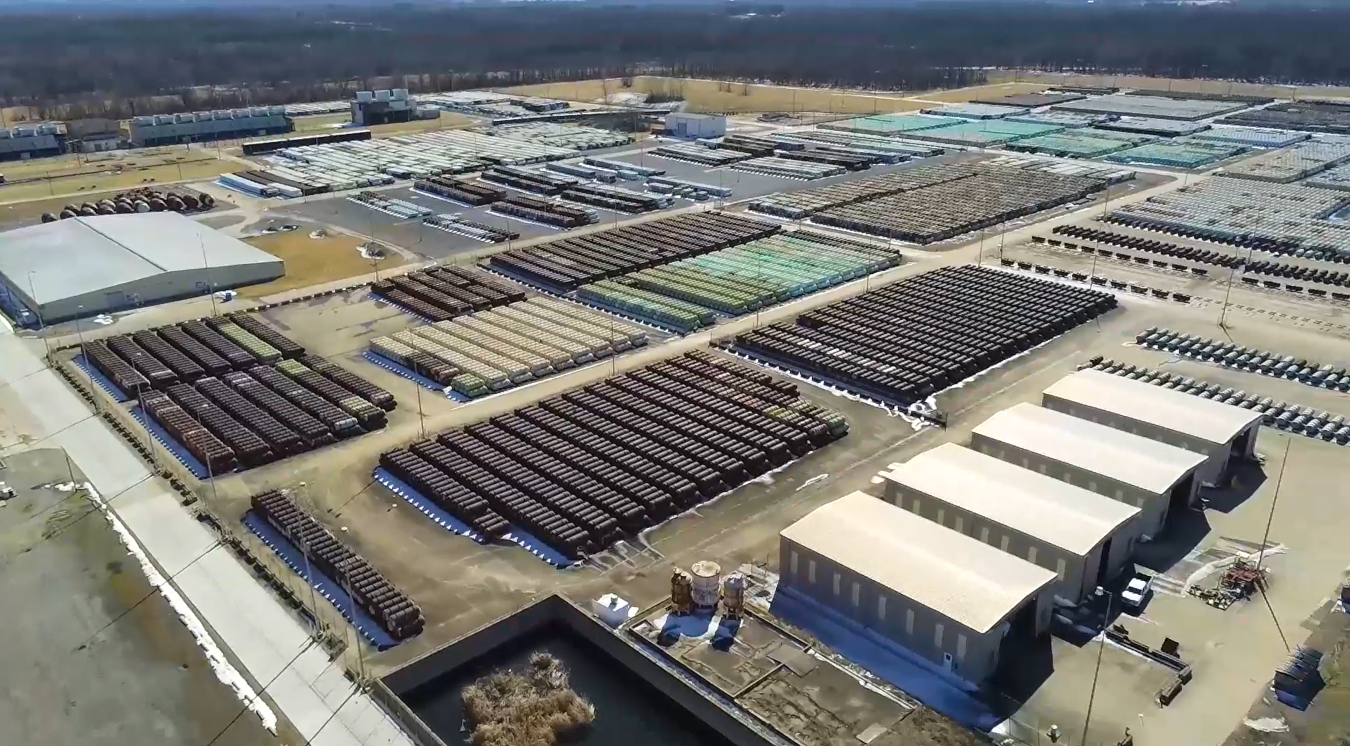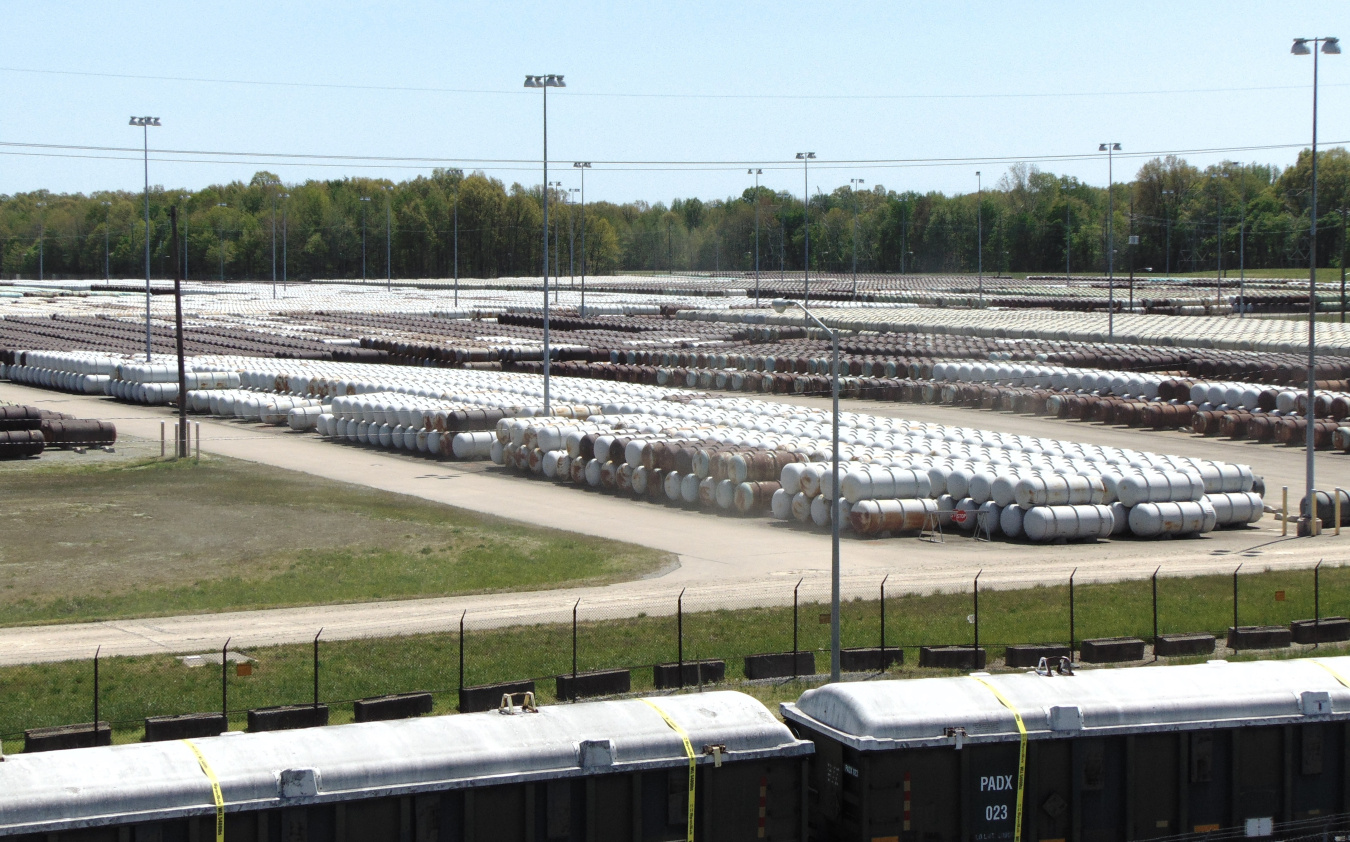For more than 60 years the Gaseous Diffusion Plants enriched uranium for use in nuclear weapons and later began supplying enriched uranium to the commercial nuclear industry. Depleted Uranium Hexafluoride (DUF6) is a coproduct of the uranium enrichment process that operated at the Paducah and Portsmouth Sites, as well as the gaseous diffusion plant in Oak Ridge, Tennessee.
The DUF6 Conversion Project provides for the operation of facilities at the sites in Ohio and Kentucky to convert the stored DUF6 into uranium oxide and hydrofluoric acid (HF). Uranium oxide is a very stable compound of uranium that is found in nature. It may be stored safely for an extended period for future reuse or disposed of in a radioactive waste disposal facility. HF has many industrial uses (e.g., in the metal processing and glass industry). It can be collected and sold creating revenue returned to the project to partially offset the operation costs of the facilities.
Facility Description
The Portsmouth DUF6 facility is located in southern Ohio and occupies approximately 100 acres of the 3,777-acre site with a workforce of about 220 employees. The Paducah DUF6 facility is located in western Kentucky and occupies approximately 100 acres of the 3,556-acre site with a workforce of about 225 employees. The DUF6 conversion facilities’ objective is to safely convert DUF6 into a more stable chemical form (uranium oxide) for beneficial reuse or disposal thus reducing immediate and future risk to workers and the surrounding community. Aqueous Hydrofluoric acid (HF) is also a product of the conversion process and has many industrial uses. Primary activities at the plants include DUF6 cylinder surveillance and maintenance, conversion of DUF6 to a more stable chemical form for use or disposal and identification of beneficial uses of depleted uranium.
DUF6 News
-

- Environmental and Legacy Management
- Nuclear Security & Safety
The Portsmouth Paducah Project Office is modernizing its depleted uranium hexafluoride conversion facilities by installing a new system designed to significantly enhance safety, improve efficiency and reduce operational pauses. September 2, 2025September 2, 2025 -
- Environmental and Legacy Management
- Waste Management
- Waste Management
The Portsmouth Paducah Project Office recently met a DOE Office of Environmental Management priority for 2025 after successfully converting more than 1,000 cylinders of depleted uranium hexafluoride into a safer, more stable oxide form. August 26, 2025August 26, 2025 -
 Recent agreements & partnerships to provide land & a portion of a legacy coproduct from the former uranium enrichment process to commercial partners is turning liabilities into assets, accelerating production of domestic energy supplies. August 12, 2025August 12, 2025
Recent agreements & partnerships to provide land & a portion of a legacy coproduct from the former uranium enrichment process to commercial partners is turning liabilities into assets, accelerating production of domestic energy supplies. August 12, 2025August 12, 2025 -

- Advance Energy Addition, Not Subtraction
- Environmental Cleanup
- Environmental Cleanup
- Environmental Cleanup
- Environmental Cleanup
- Environmental Cleanup
The U.S. Department of Energy (DOE) today announced the signing of a lease with General Matter Inc for the reuse of a 100-acre parcel of federal land at the former Paducah Gaseous Diffusion Plant for a new private-sector domestic uranium enrichment facility that is ushering in a new nuclear renaissance for the nation.August 5, 2025




